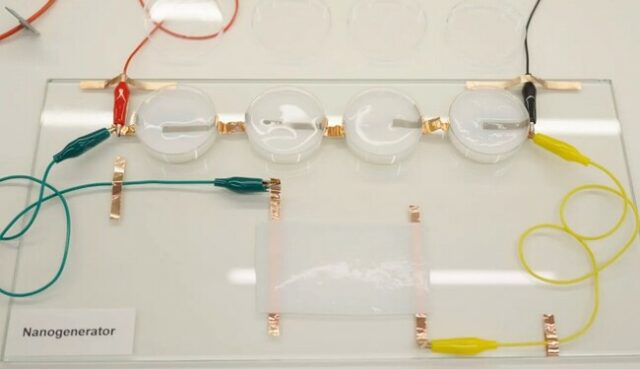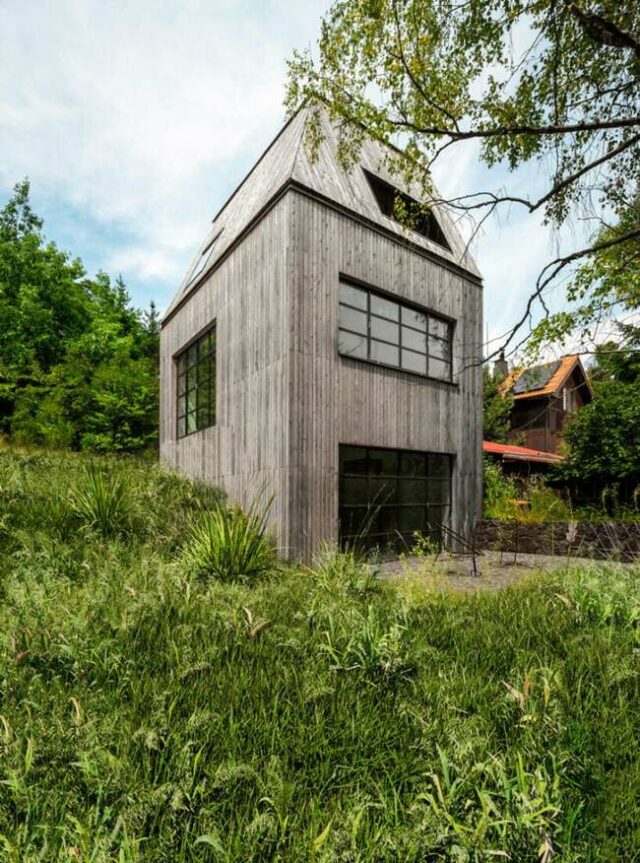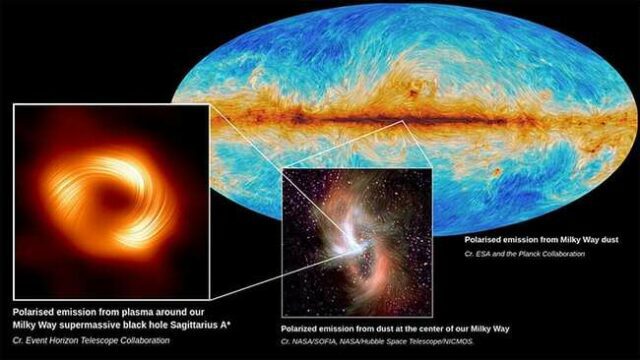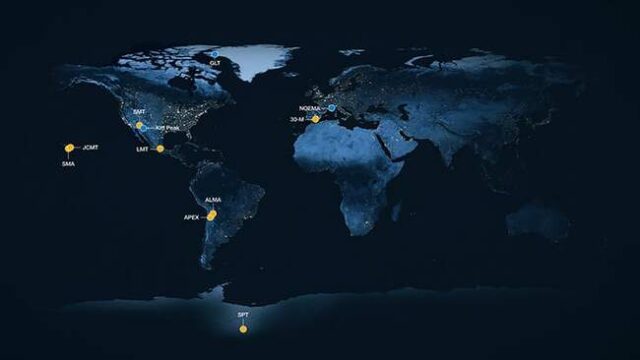
The groundbreaking discovery by University of Queensland scientists heralds a new era in sustainable energy generation, as they stumbled upon a nanogenerator capable of harnessing the potential of carbon dioxide, the ubiquitous greenhouse gas. In a serendipitous turn of events, the research team inadvertently transformed CO2 molecules into a source of electricity by ingeniously manipulating positive and negative ions of varying sizes. This innovative approach not only promises a renewable energy solution but also challenges the prevailing negative perception surrounding carbon dioxide, highlighting its intrinsic value as a fundamental building block of the universe.

Driven by the vision of revolutionizing energy production, Dr. Zhuyuan Wang and his team envision a future where portable devices powered by atmospheric CO2 could redefine the dynamics of everyday electronics. Inspired by the initial success of their nanogenerator, which effortlessly extracted electricity from laboratory air, the researchers aim to scale up their invention, envisioning larger devices capable of meeting the power demands of office electronics. With unwavering determination, fueled by the prospect of transformative impact, the team embarks on a journey of refinement and innovation, propelled by the support of the Australian Research Council’s Center of Excellence for Green Electrochemical Transformation of Carbon Dioxide.

Cottage JARO by edit! design studio stands as a testament to the fusion of modern design sensibilities and the rustic charm of traditional Czech cottages. Nestled on a forested slope in the picturesque Štěchovice region, its timber-clad façade seamlessly integrates with the surrounding landscape, creating a serene retreat in harmony with nature. The strategic placement of the cottage, accentuated by its vertical structure, not only capitalizes on the breathtaking views of the valley and the meandering Vltava River but also accentuates the organic flow between indoor and outdoor spaces.

Within the cottage, every element is carefully curated to enhance the experience of its inhabitants. From the sculptural staircase that gracefully connects all three levels to the thoughtfully divided garden, each aspect reflects meticulous attention to detail and a deep reverence for the environment. The interior spaces, bathed in natural light filtering through expansive windows, exude an aura of tranquility and warmth. As the exterior façade weathers gracefully over time, it becomes an integral part of the evolving landscape, symbolizing the enduring relationship between architecture and nature. Through a harmonious blend of form, function, and artistic expression, Cottage JARO emerges as a timeless sanctuary where modern living coexists in perfect symbiosis with the enchanting beauty of the Czech countryside.









The recent polarized image of Sagittarius A*, our local black hole, captured by the Event Horizon Telescope Collaboration, unveils a captivating insight into the enigmatic nature of these cosmic behemoths. Revealing a spiraling magnetic field, the image offers a glimpse into the intricate workings at the heart of the Milky Way. This milestone in astrophysical observation not only brings us closer to comprehending the mechanics of black holes but also sheds light on the formation and evolution of galaxies. The striking resemblance between the magnetic fields of Sagittarius A* and M 87* underscores a fundamental similarity in the governing principles of black holes, despite their contrasting sizes and environments. This discovery hints at the presence of a jet emanating from Sagittarius A*, reshaping our understanding of the Milky Way’s cosmic history and the role of black holes in shaping the cosmos.

As technological innovations continue to bolster the capabilities of the Event Horizon Telescope Collaboration, the pursuit of unraveling the mysteries of black holes intensifies. Through a global effort, telescopes spanning the planet collaborate to form an Earth-sized observatory, pushing the boundaries of our observational prowess. With aspirations of capturing multicolored views and high-fidelity footage of event horizons, alongside the prospect of integrating space-based telescopes into the observational network, the horizon of discovery beckons. In this quest for knowledge, transcending national borders, humanity converges in its endeavor to fathom the cosmos, acknowledging that even the most formidable cosmic entities, like black holes, yield to the collective curiosity of humanity.




In a historic milestone, the government of British Columbia has officially recognized the ancestral ownership of 200 islands nestled along the picturesque west coast of Canada, conceding their rightful belonging to the Indigenous Haida Nation. Termed as the “Xhaaidlagha Gwaayaai” or the “islands at the end of the world” by the Haida, this acknowledgment signifies a profound departure from conventional negotiations between First Nations and the Canadian government. Rather than a gesture of concession, this agreement underscores the enduring reality that these lands always belonged to the Haida—a subtle yet profoundly significant shift in the dynamics of indigenous land rights negotiations.

BC Premier David Eby hailed the treaty as a long-overdue step towards reconciliation, one that will pave the way for the responsible management of over half a million hectares of land by the Haida people. The agreement, while granting autonomy over the islands to the Haida, maintains the integrity of essential services such as postal service, shipping lanes, and local governance. Minister of Indigenous Relations of BC, Murray Rankin, emphasized the importance of this landmark agreement, highlighting the creativity and courage it took to forge a path towards a better future for both the Haida people and the broader community. This departure from traditional courtroom battles sets a new precedent, demonstrating a commitment to recognizing indigenous sovereignty and fostering collaborative solutions for land disputes across Canada.

Millions of birds are now navigating the skies of Texas with greater safety, thanks to the success of the Lights Out campaign spearheaded by the Audubon Society and its partners. Positioned along one of the most critical migratory pathways in the Americas, Texas hosts nearly 2 billion birds during their biannual migrations, making up a significant portion of the US bird population. With over 400 species traversing the state, conservation efforts have become paramount to protect these avian travelers.

Through collaborative efforts and community engagement, the Lights Out initiative has gained traction, persuading dozens of building managers across Texas to dim unnecessary outdoor lights during peak migration periods. This simple yet effective measure has proven instrumental in reducing bird collisions, with research indicating that such actions could prevent up to 60% of bird deaths caused by building collisions. As cities like Houston and Fort Worth dim their skylines, the once-attractive beacons for disoriented birds are now becoming safer passage routes, ensuring that these winged voyagers can continue their journey unimpeded.

The bustling streets of Paris, renowned for their architectural beauty and cultural vibrancy, are undergoing a transformative shift as cyclists now outnumber car drivers. In a city where life intertwines with the mundane tasks of commuting and errands, a recent report by L’Institut Paris Région heralds a significant milestone towards a more eco-friendly urban lifestyle. Released in April 2024, the study reveals a pronounced shift in transportation dynamics, with cyclists taking the lead on Parisian streets, relegating emission-producing cars to the sidelines. The research, eagerly awaited by academics, corporations, and government entities alike, underscores a collective effort towards sustainable urban mobility, resonating with the ethos of modernity and progress embodied by the City of Light.

Within the broader metropolitan expanse of Île-de-France, where daily life pulsates with 34.5 million trips, the study’s findings illuminate patterns of movement shaped by diverse factors. While cars retain their significance for suburban commuters navigating greater distances, Parisians have embraced cycling as a primary mode of transportation, constituting 30% of bicycle trips within the region. This paradigm shift reflects a concerted effort by city authorities, exemplified by Mayor Anne Hidalgo’s initiatives to prioritize bike lanes, reduce parking, and pedestrianize select thoroughfares. Beyond the environmental dividends of reduced emissions and improved air quality, the rise of cycling resonates with a broader cultural shift towards healthier, more active lifestyles, prompting cities across Europe to explore innovative strategies to foster cycling infrastructure and promote sustainable urban logistics.

The Aptera solar-powered car, long a dream on the horizon of sustainable transportation enthusiasts, has taken a substantial leap towards reality with the recent arrival of its first production-grade body at the company’s headquarters in San Diego. With 34 square feet of solar paneling powering the vehicle as it drives or while parked, Aptera promises a revolutionary step towards eco-conscious commuting. Yet, the transition from concept to production-grade vehicle demands meticulous attention to detail, as the company fine-tunes cable routing, connectors, and component placement in preparation for the initial production runs. While finalizing essential elements such as suspension, safety features, and drivetrain for mass production remains pending, Aptera’s commitment to delivering 10,000 vehicles annually underscores its ambitious vision for a solar-powered future.

Aptera’s design philosophy revolves around obsessive attention to aerodynamics, aiming to minimize drag and maximize energy efficiency. By streamlining the vehicle’s shape and structure, Aptera achieves remarkable fuel economy gains, challenging conventional notions of automotive design. Co-CEO Chris Anthony emphasizes the significance of aerodynamics in energy utilization, highlighting the potential for substantial improvements in fuel economy with minimal drag. With only four main structural parts, the Aptera stands as a testament to simplicity in manufacturing, offering not just environmental benefits but also practical advantages in assembly and maintenance. As the company pushes towards mass production, the integration of solar panels promises up to 40 miles of range per sunny day, complemented by traditional EV charging options, setting a new standard for sustainable mobility.

In the heart of Hamilton, a novel initiative is quietly revolutionizing the approach to housing insecurity. IMBY, or “In My Backyard,” spearheads a grassroots effort to combat homelessness, one tiny home at a time. Nestled in the city’s north end, their inaugural project is a testament to their commitment, offering a beacon of hope amidst the housing crisis gripping the region. A compact yet functional 430-square-foot dwelling, replete with all the essentials for comfortable living, emerges behind an existing home on John Street North. While modest in scale, this tiny house represents a giant leap forward in addressing the pressing need for affordable housing options.

With meticulous attention to detail and unwavering dedication, IMBY’s co-founders, Alicia Wilson, and Siobhan Koch, have navigated the bureaucratic maze to bring their vision to life. Their initiative is about constructing physical structures and fostering a community-driven solution to a complex societal challenge. As the finishing touches are put in place, anticipation mounts for the imminent occupancy of their inaugural resident, marking a significant milestone in their journey. Buoyed by the success of its pilot project, IMBY sets its sights on expanding its footprint across the city, guided by the principle of housing as a fundamental human right. Through innovative partnerships and a steadfast commitment to affordability, they strive to ensure that no one is left behind in the pursuit of safe and dignified shelter.

IKEA’s unveiling of the BRÄNNBOLL collection marks a significant departure from the stereotypical dark and immersive gaming setups that have long dominated gamer living spaces. With a keen understanding of the evolving needs of gamers and their households, IKEA aims to create a harmonious blend of functionality, style, and comfort. By infusing the collection with a palette inspired by athleisure and street sports, IKEA ensures that these gaming-focused pieces seamlessly integrate into modern interiors, whether or not gaming is the primary activity. Philip Dilé, an IKEA product design developer, emphasizes the collection’s versatility, envisioning spaces that effortlessly transition between gaming and everyday living.

Central to the BRÄNNBOLL collection’s appeal is its focus on ergonomic seating solutions tailored to various gaming preferences. From fold-out armchairs for intense gaming sessions to rocking-style chairs for leisurely play, each piece prioritizes comfort without compromising on style. However, perhaps the most ingenious addition is the gaming station disguised as a contemporary cupboard, offering a discreet yet functional storage solution for gaming enthusiasts. With features like foldable tabletops, integrated cable management systems, and ample storage space, this multifunctional unit epitomizes IKEA’s commitment to enhancing the gaming experience. Scheduled for release in September, the BRÄNNBOLL collection promises to revolutionize gaming furniture, offering a refreshing alternative to conventional setups while catering to the diverse needs of gamers and their households.
































































